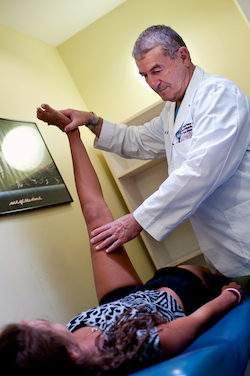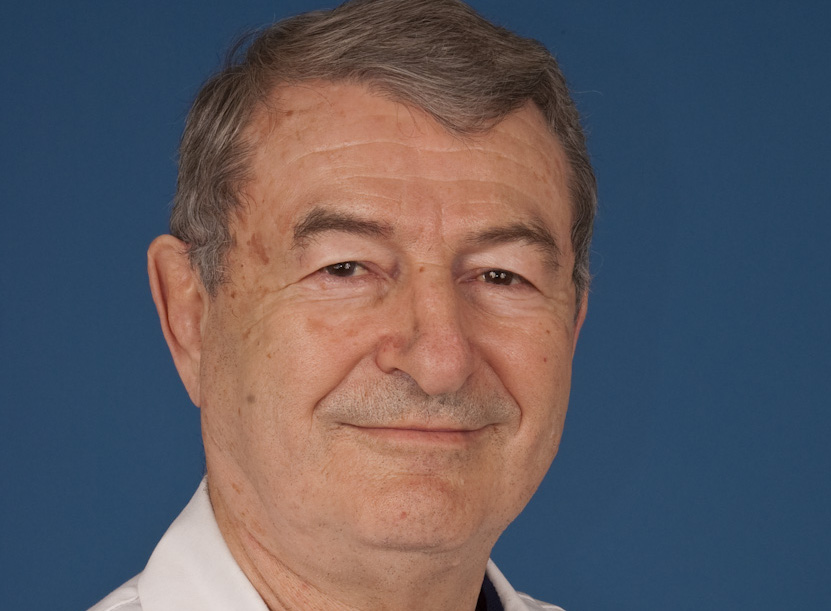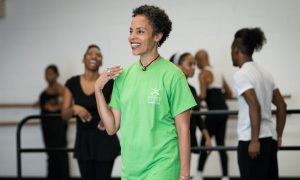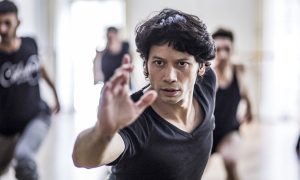Dance training can make heavy demands on the body, particularly at the competitive team, pre-professional, and professional levels. It can be incredibly difficult for dancers to take time off from training and performing – when castmates and teammates may depend on them, when their heart and soul are fully committed to dancing, and sometimes when their livelihood even depends on it.
In these all-too-common instances, dance medicine professionals work hard to help dancers get back to the studio and stage as soon as possible. In this way, they’re instrumental to the dance field, but most often don’t get the recognition and praise that dancers get.
Boston Dance Alliance (BDA) wanted to do something about that, and awarded Dr. Lyle Micheli with the 2018 Unsung Hero Award. BDA Executive Director Debra Cash and BDA Board of Directors Chair Alicia Downey stated on the award certificate that Dr. Micheli’s “scientific rigor, insightful care and enduring compassion have kept Boston’s dancers dancing.”

Dr. Lyle Micheli. Photo courtesy of Boston Children’s Hospital.
He has worked with Boston Ballet, the Walnut Hill School for the Arts, the Boston Conservatory and numerous individual dancers. He established The Micheli Center for Sports Injury Prevention in April 2013, the first center of its kind in the country. Dance Informa spoke with Dr. Micheli about his work treating Boston’s dancers for over 40 years. He made it clear that a good deal of their work is in treatment of injury and related issues. However, an attitude of prioritizing prevention – so that problematic and painful injuries never occur – is right there in the name.
Dr. Micheli began working with Boston Ballet’s dancers in 1975. “I think they’ve appreciated my functional approach, helping dancers get back up to speed in a safe way as quickly as possible,” he shares. This partnership aligned with the first dance medicine conference in Los Angeles in 1978.
Dr. Micheli says that common injuries and sites of pain differ in style of dance most commonly practiced, as well as the developmental stage of the dancer. Overall, however, dance injuries most often occur in the legs, feet/ankles, hips and back.
Contemporary dancers more commonly face back issues, and ballet dancers more often in the lower body, he reveals. Tight iliotibial (IT) bands (on the outer leg line) are often an issue for ballet dancers, for example. Besides function and aesthetic in technique, tight areas can be an injury risk because of the way the body compensates – asking another part of the body to execute an action that it’s not designed to execute, if the area designed to it is for some reason unable to do so.
Young dancers training in ballet more often encounter problems in the hips and knees because of forcing turnout – out of imitating peers with more natural external rotation, and/or a lack of awareness of their own safe, natural turnout. That seems to clearly signal the importance of young dancers finding their turnout – for teachers to spend time helping them find it, stressing the importance of keeping it, and emphasizing that everyone’s turnout is different because we all have different skeletons.
Dr. Micheli also asserts that “the biggest problem with injury is re-injury.” That’s another clear signal to take a conservative approach with injury recovery; jumping back in too quickly will only land dancers back in the injured place where they were.
Dr. Micheli describes a graduated approach that he uses to help minimize the risk of re-injury while also getting dancers back to the studio and stage as soon as safely possible. He does imaging, such as an MRI, to get a better sense of what’s going on with the issue area. Then comes a period of “relative rest”, including some sort of engaging the body that doesn’t stress the injured area and (most often) physical therapy.
Depending on the severity of injury and other unique characteristics of the patient, there’s a follow-up in two to three weeks. When signs say it’s appropriate, a gradual sequence of getting back to dancing commences – with a ballet dancer, for instance, doing just barre and then through adagio and then the whole class. It’s all part of what Dr. Micheli describes as a growing awareness, in both the dance medicine and general dance communities, of a “continuum of wellness, as a holistic approach, in dance medicine – including nutrition, functional anatomy, mental health, developmental science and more.”
He describes two other examples bearing out that shift. One, female athletic triad (amenorrhea or loss of period, significant weight loss and bone loss) isn’t as common as it once was. This is due to the fact that awareness and effective prevention programs are growing. Also, more and more dancers realize that restrictive diets and dangerously low body weight make it quite difficult to perform at their peak through the rigors of serious dance training.
Second, Dr. Micheli recalls how the dance world at large once believed that strength was the most important determinant of readiness for pointe work. Now we understand that range of motion is just as important, he says. It all goes back to what seems to be a guiding truth for him – “the more you know about the physical demand of the activity, the more accurately you can make your diagnosis.”
It seems as if Dr. Micheli brings that wealth of knowledge and holistic, mindful approach to every patient he treats. Boston Dance Alliance has honored him for doing that for over 40 years. The city’s dance community is forever stronger, healthier and so very grateful.
By Kathryn Boland of Dance Informa.















